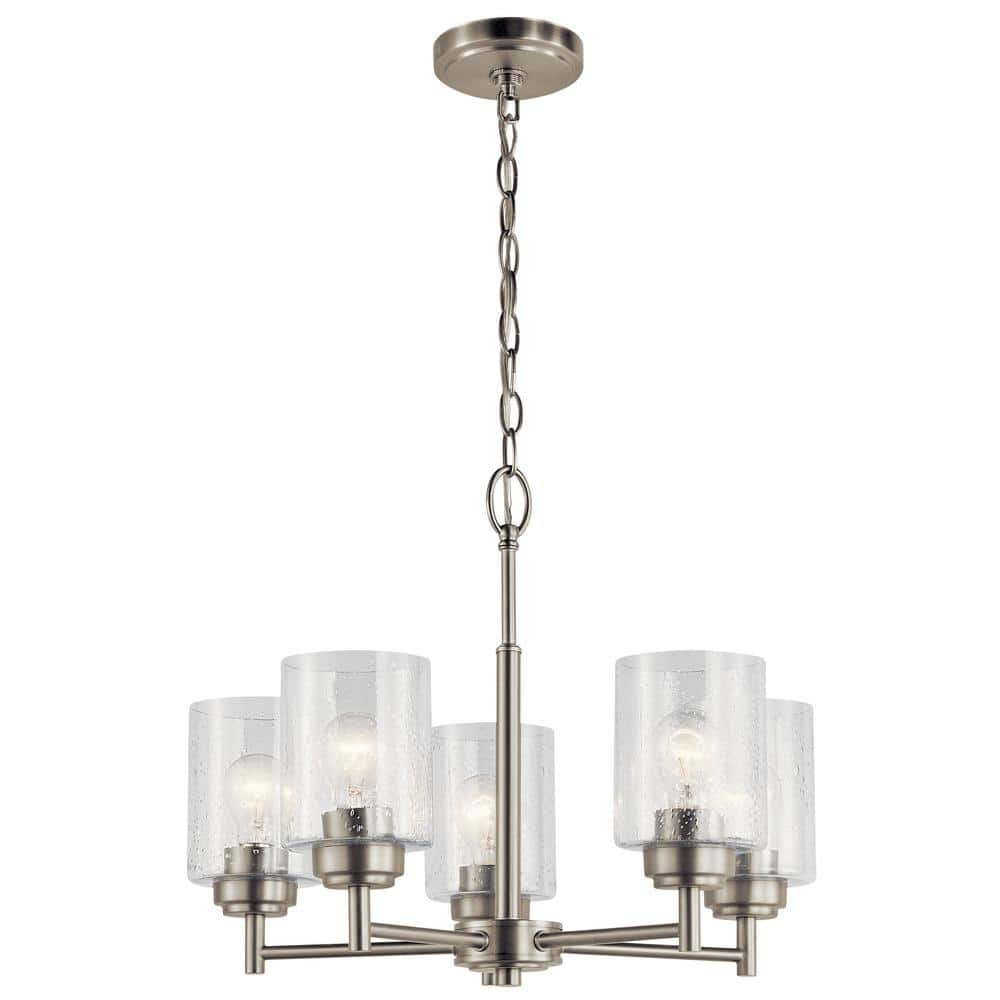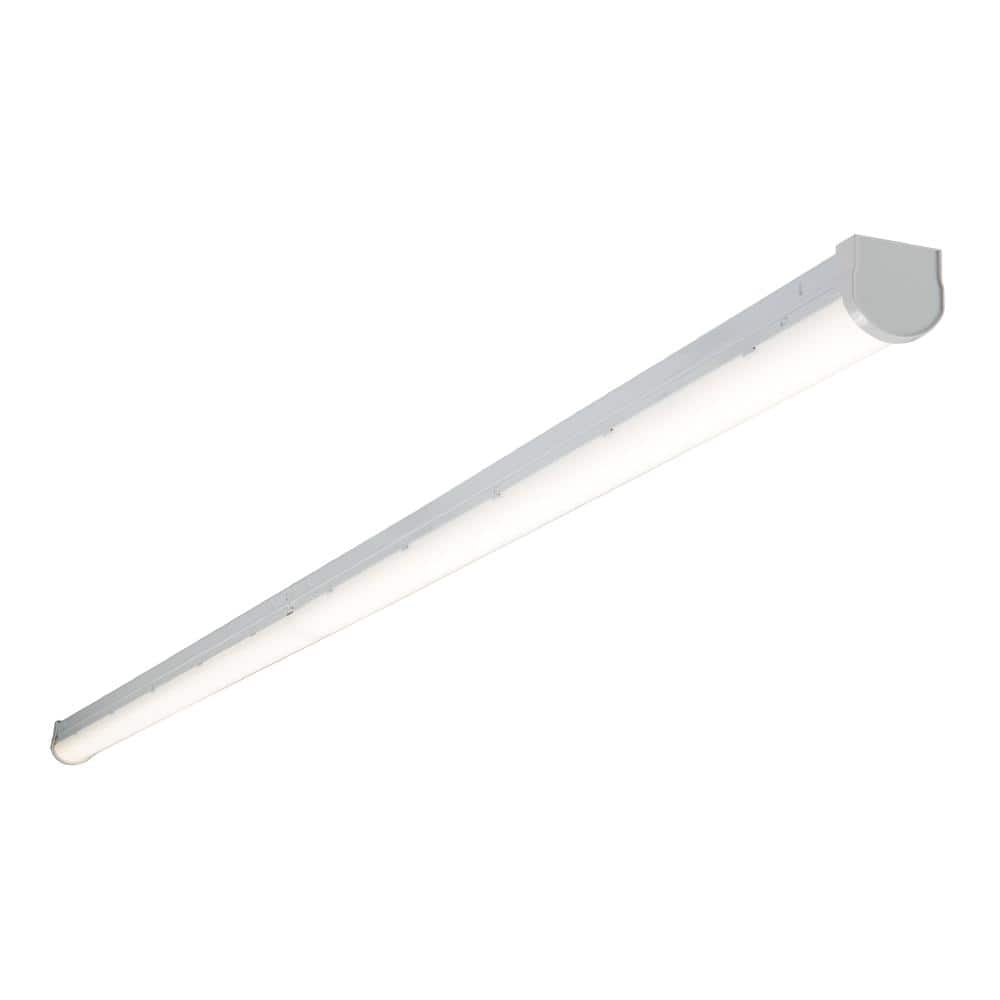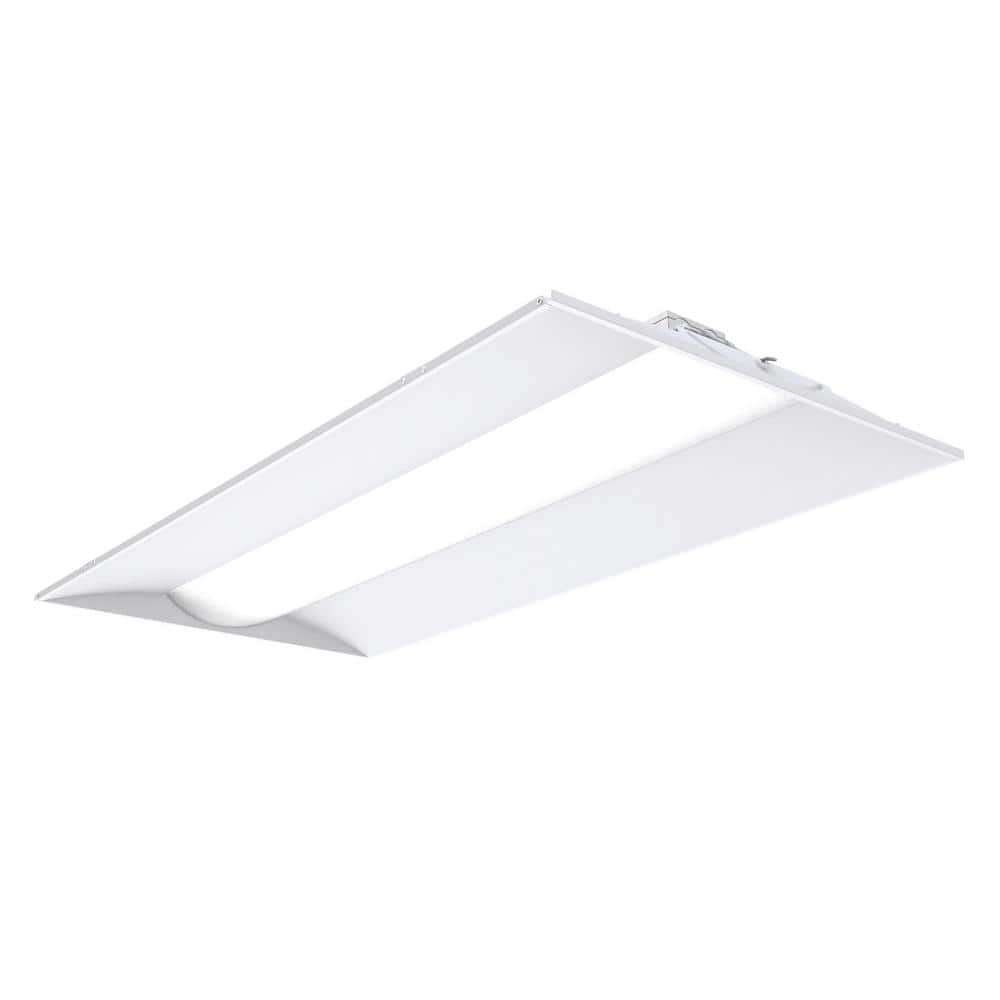KICHLER Winslow 19.75 in. 5-Light Brushed Nickel Contemporary Shaded Cylinder Chandelier for Dining Room
Brushed nickel classic contemporary chandelier. Great for foyer, kitchen, dining room, entryway, or bedroom. Uses five 75W E26 incandescent or LED bulbs (not included).
Enhance the visual appeal of your decor with the Kichler Winslow 19.75 in. 5-Light Brushed Nickel Mini Chandelier. It features an elegant design with a brushed nickel finish that is sure to accentuate any contemporary-style decor. The clear glass diffusers of this chandelier provide bright illumination to add a radiant glow to your space. This chandelier can be installed with the glass facing up or down to create beautiful ambient lighting.
- Steel construction ensures strength and durability
- Designed to be installed as an uplight or a downlight
- Uses five 75W incandescent medium-base A19 bulbs (not included)
- Can be used with 36 in. standard-gauge brushed nickel chain model 2996N1 (sold separately)
- Brushed nickel finish complements any room decor
- ETL rated for safe use in dry locations
- Comes with a 36 in. L chain/stem that enables the chandelier to be hung from the ceiling
- Clear seeded glass diffusers offer bright, ambient lighting
Additional information
| Chain Length (in.) | 36 |
|---|---|
| Fixture Depth (in.) | 19.75 |
| Fixture Height (in.) | 16 |
| Fixture Weight (lb.) | 9.5 |
| Fixture Width (in.) | 19.75 |
| Maximum Hanging Length (in.) | 54 |
| Mounting Deck Height (in.) | 1 |
| Mounting Deck Width (in.) | 4.75 |
| Certifications and Listings | ETL Listed |
| Manufacturer Warranty | 1 Year |






by Edward
Exactly what we wanted…..very bright with 60 watt Edison Dimmable LED Bulbs.
by Dawn
I like my chandelier very much, the light is beautiful.
by Amanda
I like that the lights can face up or down.
by Pudda
Great lighting, adjustable height. Very happy with this purchase.